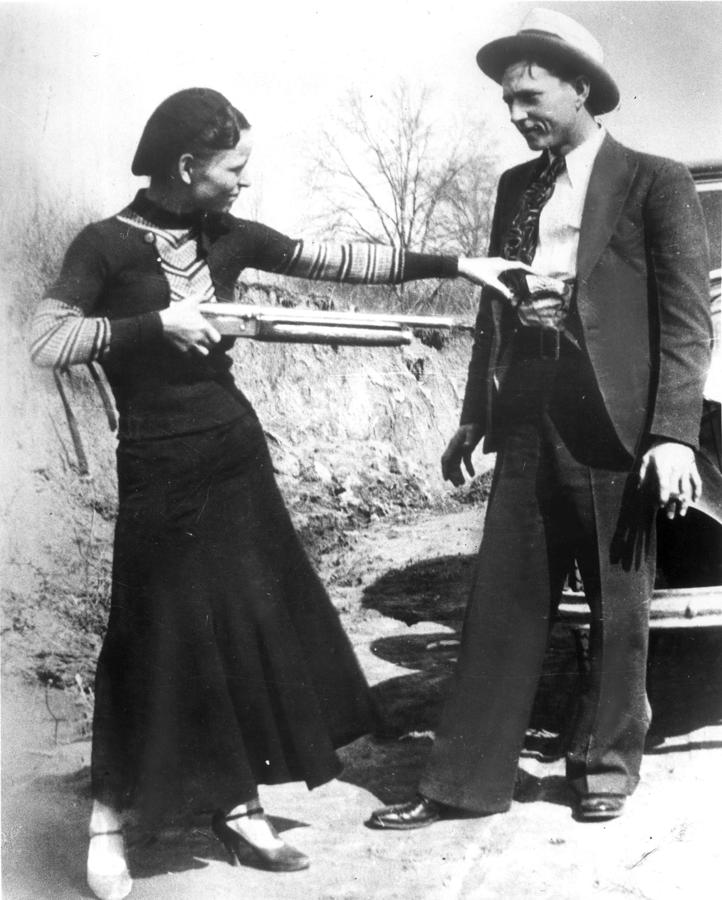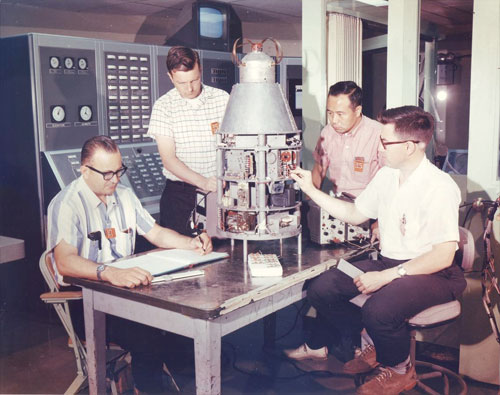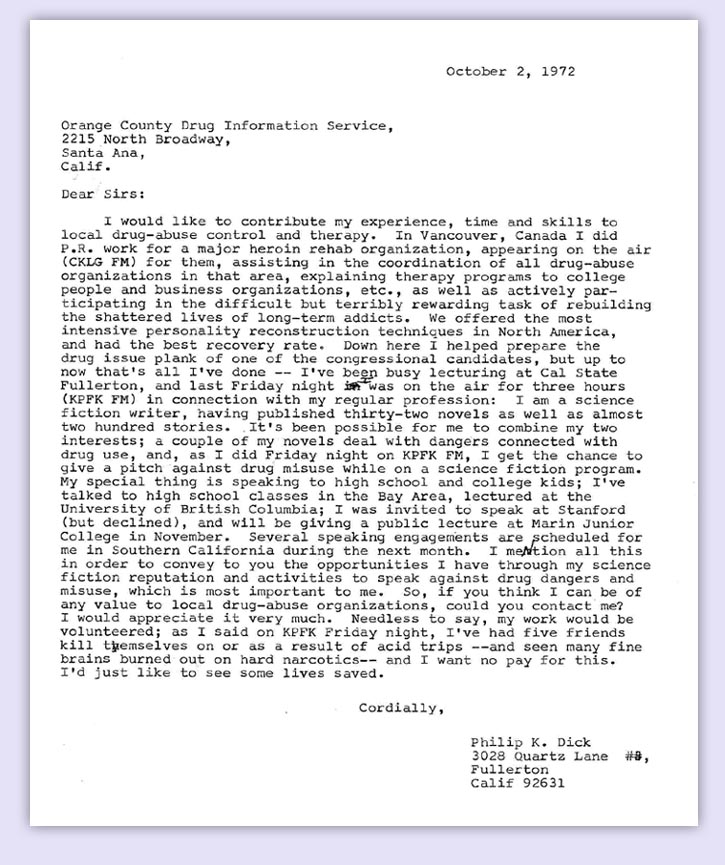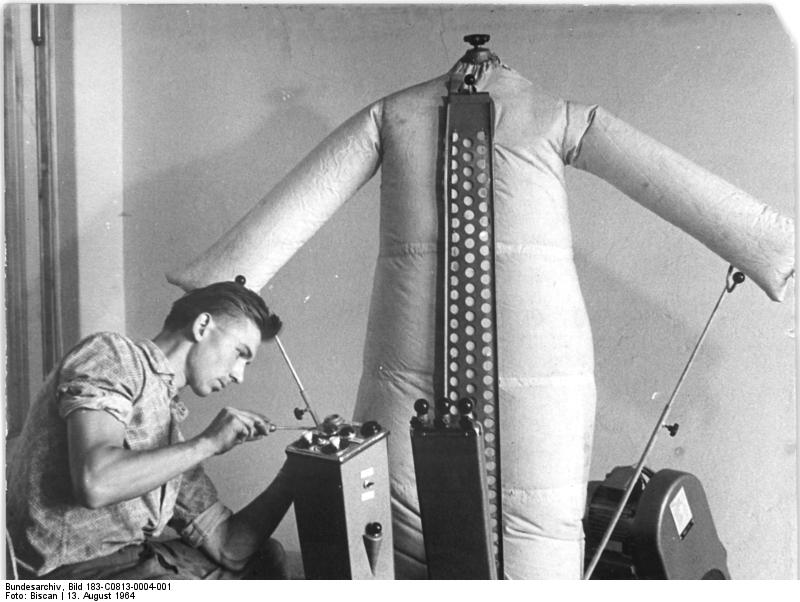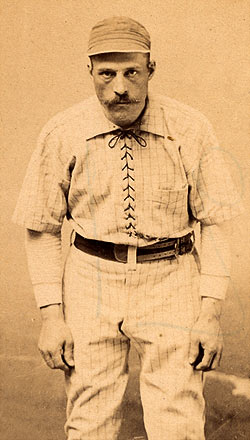Some search-engine keyphrases bringing traffic to Afflictor this week:

Afflictor: Believing that the Affordable Care Act being upheld means that Martin will eventually be able to get that nosebleed looked at.
- What does it mean that Al Goldstein and Larry Flynt were once, not too long ago, considered the filthiest, most disgraceful people in the nation, and now even the most obscene thing they were selling can easily be viewed on a computer screen in any home?
- Old Print Articles: Frontier legend Calamity Jane in her dotage (1901) + A sketch of slain desperado Buckskin Joe (1871).
- Classic Photograph: Bonnie Parker and Clyde Barrow, Flirting (1933).
- Featured Videos: Look inside the Palo Alto Byte Shop (1977) + Groucho Marx sasses Ray Bradbury (1955) + Fitness industry blooms as Information Age begins (1975) + Moral philosopher Peter Singer questions our priorities + B.F. Skinner discusses education in long-form interview + Michael Crichton believed Orwell’s 1984 vision came true + The first commercial for Atari’s Pong (1975) + Failure Analysis Associates of Los Angeles figure out why disaster occurred (1977) + The Sand Flea Jumping Robot can leap 30 feet + Paintable batteries developed at Rice University.
- Recently Posted on NYC’s Craigslist: Please recycle + I hate my job and love my bong + Even if you like hunting, I can make you feel dirty + I am go to pretend I’m morally conflicted before doing my son’s friend.
- Dissident Chen Guangcheng decries China’s enforced urbanization.
- Japanese design engineering firm creates alternate human organ system.
- Maybe we should develop and utilize the space beneath our streets.
- Chris Anderson examines the brave new world of drones.
- Claudine Longet had it all–husband, kids and lover–for awhile.
- Scientists want to hack into Stephen Hawking’s brain.
- Dutch company plans a reality show on Mars in 2023.
- China’s hopes for soccer mirror the country’s broader goals.
- Pediatric anesthesiologist Virginia Apgar knew eyes could deceive.
- Lewis Lapham appraises our technological age of miracles.
- Nora Ephron was a prominent voice in New Journalism.
- Bill James approved of the Congressional steroid hearings.
- Patti Maes thinks smartphones will soon change dramatically.
- The cutting edge of auto design resurfaces at Le Mans.
- State capitalism may not be the death of innovation.
- Ste Pickford still sketches on a pad with a pencil in the Digital Age.
- Visiting a Chinese restaurant staffed by robots.
- A brief note from 1890 about horse bologna.
- A brief note from 1888 about a missing salesman.
- A brief note from 1892 about a sleeping man.
- This week’s Afflictor keyphrase searches.
Prevailing wisdom holds that state capitalism is faulty because it doesn’t promote long-term innovation. In the U.S., government investments in technology, from the Internet to lithium cell batteries have shown good returns. But such intervention is fraught with political and ideological problems. The Internet, I think, is a particularly good example of how the public sector can incubate an industry until its ready for venture capital to help it innovate. But some nations are relying solely on the state aspect and turning out strong results. From “The Rise of Innovative State Capitalism,” Joshua Kurlantzick’s interesting new Businessweek article:
“It is a mistake, however, to underestimate the innovative potential of state capitalism. Rising powers such as Brazil and India have used the levers of state power to promote innovation in critical, targeted sectors of their economies, producing world-class companies in the process. Despite its overspending on some state sectors, the Chinese government has nevertheless intervened effectively to promote skilled research and development in advanced industries. In so doing, the state capitalists have shattered the idea that they can’t foster innovation to match developed economies. State capitalists’ combination of government resources and innovation could put U.S. and European multinationals at a serious disadvantage competing around the globe.
State intervention in economic affairs runs against the established wisdom that the market is best for promoting ideas. At the same time, throughout history, the governments of many developed nations have actively fostered groundbreaking companies, from Bell Labs in the U.S. to Airbus in Europe.
Brazil is perhaps the best current example of how a state-capitalist system can build innovative industries. Successive Brazilian governments have intervened—with incentives, loans, and subsidies—to promote industries that otherwise would have needed long-term private investment to make them competitive with U.S. and European rivals. At the same time, Brazil preserved strong, independent management of state-backed firms, ensuring they did not become political boondoggles.” (Thanks Browser.)
Tags: Joshua Kurlantzick

“A tiny triangular-shaped car known as the DeltaWing was giving the other 55 fire-breathing machines a run for their money.” (Image by Chris Pruitt.)
As science and technology continue to improve and carbon meets silicon with greater regularity, it’s increasingly difficult to assess the nature of so-called human competition. But even 40 years ago, the line was blurry. From the Economist, an article about cutting-edge auto engineering at the recent Le Mans:
“A tiny triangular-shaped car known as the DeltaWing was giving the other 55 fire-breathing machines a run for their money when it was unceremoniously bumped off the track and into the crash barrier by one of the Toyotas. So ended a brave attempt to show that a car with half the weight, half the horsepower and half the aerodynamic drag could run rings round the dreadnoughts of the sport.
It was not the first time that a radical, lightweight design has challenged conventional thinking in motor racing. Something similar happened when Colin Chapman’s featherweight Lotus 23, with Jim Clark at the wheel, made its debut at the Nürburgring’s infamous northern loop in 1962. With its tiny 100 horsepower motor (a third that of its rivals), the Lotus 23 shot ahead of the field of ponderous Porsches, Aston Martins and Ferraris. After one lap of the rain-soaked track, Clark was 27 seconds ahead of the leading Porsche driven by the American ace, Dan Gurney. The world of motor racing had never seen anything like it before.
The following month, when two Lotus 23 cars—one with a 750cc engine and the other with a 1,000cc unit—were entered for the Le Mans endurance race, French officials promptly banned them for being too good. Chapman swore never to enter a Lotus car for the 24-hour Le Mans race ever again—and kept his promise till the day he died.”
••••••••••
Jim Clark handling the Lotus 25, 1963:
Tags: Jim Clark
From “Serving Humanity, One Diner at a Time,” a story by Eddie Wrenn in the Daily Mail about a restaurant in China staffed by robots:
“If you pay a visit to this restaurant, in downtown Harbin, China, you will find 18 robots – from a waitress to a cooker to an usher – ready to ensure your dining experience is perfect.
The restaurant has 18 types of robots, each gliding out of the kitchen to provide your dish, with specialty robots including a dumpling robot and a noodle robot.
When a diner walks in, the usher robot extends their arm to the side and, with a sci-fi flourish, says ‘Earth Person, Hello, Welcome to the Robot Restaurant.’
After the diners have ordered, the robots in the kitchen set to work cooking.
Once the dish is prepared, a robot waiter, which runs along tracks on the floor, carries it from kitchen to table.
Prepared dishes are placed on a suspended conveyor belt and when the plate reaches the right table the mechanical arms lift it off and set it down.
As they eat, a singing robot entertains diners.”
Tags: Eddie Wrenn
Remarkable 1978 footage from inside the Palo Alto Byte Shop, one of the outlets in Paul Terrell’s early personal computer retail chain. The power was just beginning to pass into our hands, though I think all these years later we still haven’t done much with it.
As happy as I am that the Affordable Care Act was not struck down by the Supreme Court, the most stomach-turning moment of the day came from Nancy Pelosi, one of the chief supporters of the reform. She said, in victory, about Ted Kennedy: “I knew that when he left us he would go to heaven and help pass the bill. And now he can rest in peace. His dream for America’s families has become a reality.”
If there was such a thing as heaven, Ted Kennedy would certainly not be there. If you display, at the very least, grave indifference for the life of another person (Mary Jo Kopechne, in this case), you don’t deserve to be celebrated and sanctified. People who believe in my party right or wrong are sickening. Wrong is wrong.•
Tags: Nancy Pelosi
From the October 2, 1888 Brooklyn Daily Eagle:
“Norfolk, Va.–A boy, while passing through the Hollies, two miles from Virginia Beach, Saturday night, discovered the skeleton of a man. From the scattered clothing, papers and other articles found around it, it was identified as the remains of Alonzo Lewis, the missing salesman of W. & B. Douglass, pump manufacturers, of New York City. The buzzards had eaten every particle of flesh off, leaving only the bleached bones. The presumption is that he was not murdered, but committed suicide.”
Tags: Alonzo Lewis
i have a crush on my son’s 21 y/o friend (on the naughty list)
my son’s 21 y/o friend just morphed into a tasty morsel but it’s killin me to even admit that b/c that is totally f*’cked up — wrong on a # of levels– b/c of my son, b/c i’ve known his friend for years, b/c he’s looked up to me as a mom (he lost his when he was little). UGH he’s a flirt too so i never know if he’s just acting like he always does w/everyone, or if he’s actually flirting w/me. i always sarcastically put him in his place to keep the respect going but damn i feel bad. i am only keeping the distance it b/c i think it’s the right thing to do, not b/c i want to. anyone i dated has said to me that his friends have to wanting me and talking about me among themselves. i’m not so sure b/c i really make sure i keep it clean and set boundaries but oh! i could sooo see myself teaching this kid a thing or two about women.
In “How to Dispel Your Illusions,” a NYRB piece from December 2011, Freeman Dyson writes about Daniel Kahneman’s reliance in objective information over subjective analysis, using as an example the work of noted pediatric anesthesiologist Virginia Apgar. An excerpt:
“Kahneman had a bachelor’s degree in psychology and had read a book, Clinical vs. Statistical Prediction: A Theoretical Analysis and a Review of the Evidence by Paul Meehl, published only a year earlier. Meehl was an American psychologist who studied the successes and failures of predictions in many different settings. He found overwhelming evidence for a disturbing conclusion. Predictions based on simple statistical scoring were generally more accurate than predictions based on expert judgment.
A famous example confirming Meehl’s conclusion is the ‘Apgar score,’ invented by the anesthesiologist Virginia Apgar in 1953 to guide the treatment of newborn babies. The Apgar score is a simple formula based on five vital signs that can be measured quickly: heart rate, breathing, reflexes, muscle tone, and color. It does better than the average doctor in deciding whether the baby needs immediate help. It is now used everywhere and saves the lives of thousands of babies.”
•••••••••••
Apgar is lauded by actress (and nurse) Kathryn Crosby, year unknown:
Tags: Freeman Dyson, Kathryn Crosby, Paul Meehl, Virginia Apgar
I’ve said before that my hunch is that in the near-term batteries will change tremendously for the better. Here’s a video about new spray-on paintable batteries invented at Rice University. (Thanks Next Big Future.)
From a new NYRB interview that Ian Johnson conducted with Chinese dissident Chen Guangcheng, a passage about the effects of the country’s rapid, enforced urbanization, in which insta-cities pop up in a few months:
“Do you think urbanization is beneficial to people? They can move to the city and earn more money.
No, I don’t think it’s beneficial. Right now it’s a blind urbanization. Cities grow up naturally over time. Now they’re trying to do it all at once. The main thing about urbanization now is to make the economic statistics look good—to build and pump up economic activity.
There’s nothing positive about urbanization?
I think for those who go to the city and work there’s a benefit. But the current way of villages being turned into towns—I don’t think there’s an advantage to that. People in the village often rely on ordinary kinds of labor to earn a living, like working in the fields, or raising geese or fish and things like that. So now what happens? They turn a village into one high-rise apartment building and that’s all that’s left of the village. Then the land is used for real estate projects controlled by the officials. Where are the people supposed to work? How is that supposed to function?
People abroad look at China’s human rights situation and they mainly see the situation of better-known people. But they don’t know about all the violations of ordinary people. You know my situation but you don’t know the situation of the huge number of the disabled in China, or the women who are bullied and abused, or the orphans in China. You probably don’t know much about them or just about a few of them. But this is why the officials are so afraid—because they know the true extent of the problem. They are terribly afraid of people organizing. It’s very delicate in the countryside now. This is why they constantly resort to detentions and so on. They don’t even try to find an excuse, they just do it—they are that scared.
So officials are aware it’s tense in the countryside?
There is nothing the leaders can do. There is a saying in China that if you are not correct, how can you correct others? Their sons and daughters have moved overseas and they are working in China all by themselves. How can they convince others? They gain money illegally together, and they get corrupted all together. They can’t blame each other. But they are very clear that if it continues like this they are going to be devastated.”
Tags: Chen Guangcheng, Ian Johnson
The Sand Flea Jumping Robot, by your friends at Boston Dynamics and DARPA.
Funny and sad, this 1972 letter published at philipkdick.com was an insane attempt by the speeded-up sci-fi author to offer his knowledge about drugs (which was considerable) to the Orange County Drug Information Service.
Tags: Philip K. Dick
Engineering, like much of life, is a series of approximations and educated bets, which may end up in failure. In order to create something almost beyond the possibility of disaster, it would have to be as overbuilt as the Brooklyn Bridge, and that’s pretty cost prohibitive at this point in developed countries.
I can’t explain exactly why I’m so interested in this 1977 video about the Failure Analysis Associates in Los Angeles, which still exists today. It’s a company run by ghostbusters searching for the ghost in the machine, who try to figure out why the best laid plans of mice and men ended up motionless in a spring-loaded trap.
One of the most storied of all American frontier legends was Martha Jane Canary, better known as “Calamity” Jane. A sharpshooter, she was a contemporary of “Wild Bill” Hickok and General George Custer. But the harsh elements can get the best of the heartiest soul, and Jane found herself on the decline as she neared her fiftieth birthday. A story about her published two years before her death in the July 12, 1901 Brooklyn Daily Eagle:
“Anaconda, Mont.–Mrs. Josephine Winfield Brake of Buffalo, N.Y., authoress and Washington correspondent for a New York newspaper, has been in Montana for the past week searching for ‘Calamity’ Jane, the noted plainswoman. Yesterday Mrs. Brake discovered ‘Calamity’ Jane in the hut of a negress at Horr, near Livingston. The poor woman was suffering with fever and was broken in spirit. The scene that followed the offer of Mrs. Brake to take ‘Calamity’ to her own home in Buffalo, where she could spend the remainder of her days in comfort, was pathetic in the extreme.
‘Calamity’ Jane has been on the frontier since she was a young girl. She was in the Black Hills at the time of the killing of ‘Wild Bill’ (William Hickok), and it was said that it was she who captured his murderer. She rendered valuable services to Custer, Reno, Egan and other Indian fighters. Of late years she has drifted about the state from place to place, making a livelihood as best she could. During the summer she sold pictures of herself to park tourists. During the past couple of years she has been ill a considerable portion of the time. The newspapers have largely printed severe articles concerning her, some of which attracted the attention of General Egan and others, who interested themselves in the woman’s plight. The result was that Mrs. Brake took steps to find Jane and the two women have now left Livingston for Buffalo.
‘Calamity’ Jane is about 50 years of age. Her maiden name was Canary and she is said to be from New York. She has been married more than once, her last husband being one Burke, a Livingston drayman.”
Tags: "Wild Bill" Hickok, Calamity Jane, George Custer, Josephine Winfield Brake
In America, our Mark Cubans buy sports franchises for fun and ego and access to all sorts of things. In China, a wealthy video-game magnate like Zhu Jun buys a football team and expensive players and coaches for all those reasons, but for a sense of nationalism as well. The following are a couple of brief passages from an interview the owner of the Shanghai Shenhua did with Patti Waldmeir of the Financial Times, which reveals a larger picture of a China that hopes to import what it needs for now while nurturing generations who will be able to create these things for themselves in the future.
••••••••••
“‘Football is a game every man loves,’ he says. ‘Through playing football, we hope to become stronger. China is becoming richer nowadays but, from my point of view, China is rich rather than strong. The country is lacking resistance. But football is a game full of resistance.’
What kind of resistance, I wonder? ‘Conflict,’ he replies. ‘China is not strong because people never say ‘No’. Tradition makes them restrain themselves rather than being open. What I am doing is to prove we can actually do everything, no matter whether the general public understands us or not.'”
••••••••••
“If the hope is that world-class players such as [Didier] Drogba and [Nicolas] Anelka can help create a world-class football nation to rival China’s status in the global economy – or for that matter, in ping-pong – it will not be easy. A mere 2,000 years after a game suspiciously like football was invented in China, the world’s most populous country has yet to make its presence felt in the world’s most popular sport.
The Chinese love to watch football; when the country qualified for its first and only World Cup tournament to date, in 2002, a reported 170m new television sets were bought to follow the team’s progress. But Chinese state media has quoted football officials as saying that only 100,000 children, in this land of 1.3bn, are playing any form of organised football, partly the result of high levels of corruption in the past.
The country’s presumed next ruler, Xi Jinping, recently outlined his plan for the Chinese game: first qualify for another World Cup; then host a World Cup; then win one. Part of Zhu’s vision, it seems, is that ‘Chinese football needs idols. Good young players will only be attracted when we make achievements.’”
Tags: Didier Drogba, Nicolas Anelka, Patti Waldmeir, Xi Jinping, Zhu Jun
Today is the 40th anniversary of Nolan Bushnell’s Atari, the pre-PC age way to get your kids to shut up for five minutes. The first commercial for the living-room friendly version of Pong from 1975, a lousy ad for a great product.
Although I wouldn’t say Atari invented Pong. Willian Higinbotham created Tennis for Two in 1958.
WILD BOAR HUNTS – $175 (S.W. FLORIDA)
COME DOWN TO MY RANCH FOR A DAY OF HOG HUNTIN`. WE ARE LOCATED JUST 90min. FROM MIAMI AND 30min. FROM FT. MYERS IN THE FLORIDA EVERGLADES`. WE`VE GOT LOTS OF MEAT HOGS AND TROPHY BOARS, YOU CAN HUNT FROM BLINDS OR SPOT & STALK EITHER WAY ITS A GUARANTEED KILL WITH GUN OR BOW. IF YOU WOULD LIKE TO HEAR MORE DETAILS ABOUT THE HUNT PLEASE CALL ME.
Michael Crichton arguing that Orwell’s 1984 actually did come to pass, not by totalitarian regime but by our own hands. You know–we like to watch and be watched.
Tags: Michael Crichton
From “How We Understand Our Gadgets,” Lewis Lapham’s new Tom Dispatch appraisal of these days of miracle and wonder:
“Like England in the late sixteenth century, America in the early twenty-first has in hand a vast store of new learning, much of it seemingly miraculous — the lines and letters that weave the physics and the metaphysics into strands of DNA, Einstein’s equations, Planck’s constant and the Schwarzschild radius, the cloned sheep and artificial heart. America’s scientists come away from Stockholm nearly every year with a well-wrought wreath of Nobel prizes, and no week goes by without the unveiling of a new medical device or weapons system.
The record also suggests that the advancement of our new and marvelous knowledge has been accompanied by a broad and popular retreat into the wilderness of smoke and mirrors. The fear of new wonders technological — nuclear, biochemical, and genetic — gives rise to what John Donne presumably would have recognized as the uneasy reawakening of a medieval belief in magic.
We find our new Atlantis within the heavenly books of necromancy inscribed on walls of silicon and glass, the streaming data on an iPad or a television screen lending itself more readily to the traffic in spells and incantation than to the distribution of reasoned argument. The less that can be seen and understood of the genies escaping from their bottles at Goldman Sachs and MIT, the more headlong the rush into the various forms of wishful thinking that increasingly have become the stuff of which we make our politics and social networking, our news and entertainment, our foreign policy and gross domestic product.” (Thanks Browser.)
Tags: Lewis Lapham
Baseball stats guru Bill James believes that steroids (or some derivative) will be eventually be safe and legal, but that doesn’t mean he thinks that Congress wasted money on the steroids hearings. He says as much in a recent Q&A session with readers on his site, providing four reasons why he feels that way, though I think reasons 3 and 4 aren’t particularly sturdy. The exchange:
“Q: In your recent piece on [Roger] Clemens, you write, ‘My view is that…it was an entirely appropriate use of the power of congress to step in and tell them to fix the problem.’ What was ‘the problem’? I assume you’re referring to steroids and HGH, but why do you consider them a problem?
A: I would say there were four reasons that it was a problem:
1) It was disrespectful of the law,
2) It promoted the widespread use of potentially dangerous and harmful substances by young people aspiring to be athletes,
3) The public largely despised the use of steroids by athletes, and
4) If sports are a significant cultural activity, which I believe they are, then it damages the culture for sports to be allowed to become something foreign and unnatural.”
Tags: Bill James
Sorry to hear of the passing of Nora Ephron, who was one of the women who saved New Journalism in the ’60s and ’70s from being an all-boys school. From “Yossarian Is Alive and Well in the Mexican Desert,” her 1969 New York Times article about Mike Nichols filming Catch-22, a passage about the presence of Orson Welles and his legend:
“The arrival of Orson Welles, for two weeks of shooting in February, was just the therapy the company needed: at the very least, it gave everyone something to talk about. The situation was almost melodramatically ironic: Welles, the great American director now unable to obtain big- money backing for his films, was being directed by 37-year-old Nichols; Welles, who had tried, unsuccessfully, to buy Catch-22 for himself in 1962, was appearing in it to pay for his new film, Dead Reckoning. The cast spent days preparing for his arrival. Touch of Evil was flown in and microscopically reviewed. Citizen Kane was discussed over dinner. Tony Perkins, who had appeared in Welles’s film, The Trial, was repeatedly asked What Orson Welles Was Really Like. Bob Balaban, a young actor who plays Orr in the film, laid plans to retrieve one of Welles’s cigar butts for an admiring friend. And Nichols began to combat his panic by imagining what it would be like to direct a man of Welles’s stature.
‘Before he came,’ said Nichols, ‘I had two fantasies. The first was that he would say his first line, and I would say, ‘NO, NO, NO, Orson !” He laughed. ‘Then I thought, perhaps not. The second was that he would arrive on the set and I would say, ‘Mr. Welles, now if you’d be so kind as to move over here. . .’ And he’d look at me and raise on eyebrow and say, ‘Over there?’ And I’d say, ‘What? Oh, uh, where do you think it should be?”
Welles landed in Guaymas with an entourage that included a cook and experimental film-maker Peter Bogdanovich, who was interviewing him for a Truffaut-Hitchcock-type memoir. For the eight days it took to shoot his two scenes, he dominated the set. He stood on the runway, his huge wet Havana cigar tilting just below his squinting eyes and sagging eye pouches, addressing Nichols and the assembled cast and crew. Day after day, he told fascinating stories of dubbing in Bavaria, looping in Italy and shooting in Yugoslavia. He also told Nichols how to direct the film, the crew how to move the camera, film editor Sam O’Steen how to cut a scene, and most of the actors how to deliver their lines. Welles even lectured Martin Balsam for three minutes on how to deliver the line, ‘Yes, sir.’
A few of the actors did not mind at all. Austin Pendleton got along with Welles simply by talking back to him.
‘Are you sure you wouldn’t like to say that line more slowly?’ Welles asked Pendleton one day.
‘Yes,’ Pendleton replied slowly. ‘I am sure.’
But after a few days of shooting, many of the other actors were barely concealing their hostility toward Welles–particularly because of his tendency to blow his lines during takes. By the last day of shooting, when Welles used his own procedure, a lengthy and painstaking one, to shoot a series of close-ups, most of the people on the set had tuned out on the big, booming raconteur.”
Tags: Mike Nichols, Nora Ephron, Orson Welles, Peter Bogdanovich


